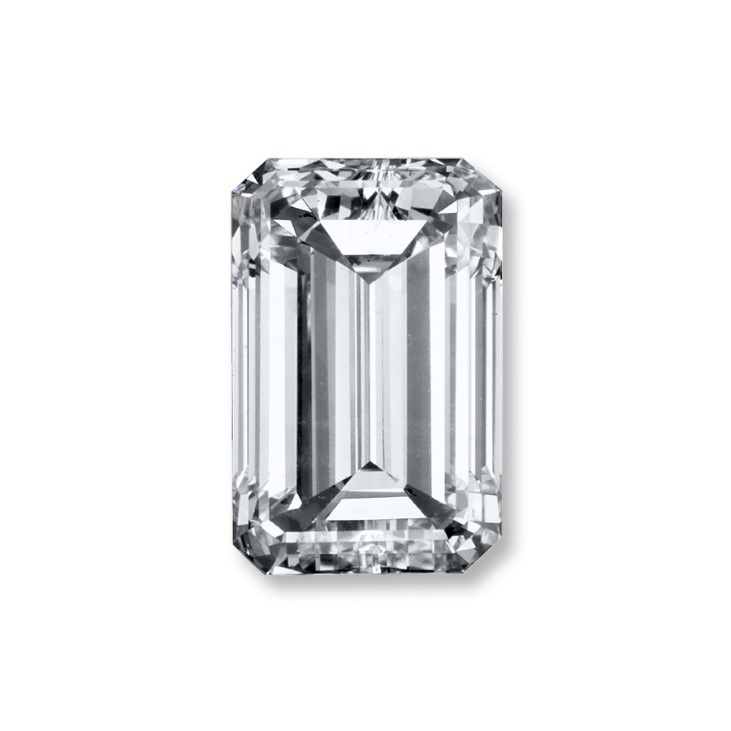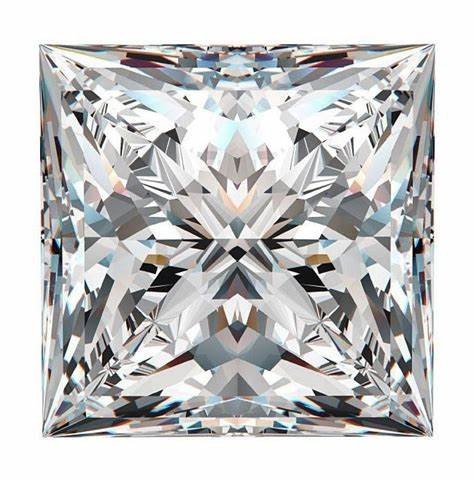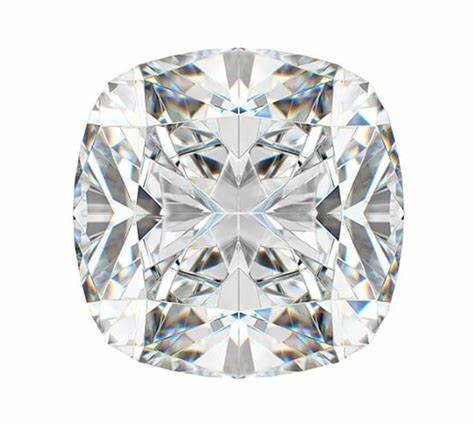Behind the cut: Square silhouettes
With a variety of shapes available, choosing the right cut for your engagement ring can be an overwhelming process. In the hopes to help ease this, we have put together a selection of the most popular square cuts on offer and the reasons as to why they’re so special!
Emerald cut

With thanks to its sleek architecture and timeless design, the emerald-cut is one of the most unique styles for engagement rings. Geometric form and exaggerated sparkle remain synonymous with the old Hollywood glamour of the 1920s. Characteristics such as a ‘hall of mirrors’ effect, created by unique step-cuts, resonated with the style of the Art Deco period and contributed to the cut’s rise to fame. Jewellers such as the ‘King of Diamonds’, Harry Winston, favoured the modern elegance that exudes from the cut and quickly incorporated the style into their own designs; helping to cement the legacy of the emerald-cut as an icon of luxury. This was further aided by the likes of Elizabeth Taylor and Grace Kelly, who’s famed emerald-cut engagement rings are the continued point of fascination. The cut’s first rise to popularity however, dates all the way back to the 1500s. As the name suggests, the cut was first used by stonecutters when working with emeralds. The green gem is notoriously soft but the stability of linear facets and chiselled step cuts prevents chipping and thus, the emerald-cut was born. When applied to diamonds the cut isn’t actually the most effective in terms of brilliance, however; by increasing the flat surface area, the cut helps to make smaller carats appear larger and provides a superlative shimmer. With such impressive beauty and strong associations with glamour, the emerald-cut remains an excellent choice for engagement rings.
Princess cut

Despite being a relatively new shape, the princess cut has made a strong impact in the industry, quickly rising to become one of the most popular square cuts. Boasting a scintillating sparkle which rivals that of the brilliant round cut combined with the elegance of sleek lines, it is clear to see why. The design was created specifically to exaggerate the unique sparkle of diamonds however; its origins are somewhat debated. Whilst the ‘princess cut’ as we know of today was made popular in 1981 by Betzalel Ambar and Israel Itskowitz, earlier origins predate this. Connections can be drawn with the complex Barion cut created by Basil Watermeyer in 1971 and the ‘profile’ cut by Arpad Nagy in 1961. Comprising of up to 76 linear facets, the unique pyramid shape of the princess cut and bevelled sides allow for excellent light dispersion which maximises brilliance. In addition to this, the pyramid shape mimics the natural shape of a diamond when split in half meaning that the finished jewel utilises up to 80% of the rough stone; considerably more than the usual 50-60%. By creating less waste and optimising the stone’s weight, the cut is a great option for those who are looking for a smaller price tag without compromising on quality.
Radiant cut

Displaying a high level of brilliance, the radiant cut certainly lives up to its name. Inspired by the sparkle of a round diamond and the silhouette of the emerald cut, Henry Grossbard created and patented the radiant cut in 1977. Consisting of around 70 facets, the cut allows for exceptional light dispersion, enhances colour and hides any minor flaws. Consequently, buyers can afford to choose a cheaper diamond which is lower on the clarity scale as the forgiving qualities of the radiant cut will provide a high-quality finish. Although similar to the princess-cut, the internal facets are uneven as opposed to linear, which creates a ‘crushed ice’ effect within the stone. This effect combined with softened bevelled edges results in a very chic and modern jewel that is sure to impress.
Cushion cut

With a rich history and a popularity spanning across centuries, the cushion cut is perfect for those wanting traditional elegance. The modern cushion cut is a modified version of the old mine cut which was created over 200 years ago and was the go-to diamond shape for jewellers. By increasing the number of facets from 58 to around 64 and enlarging the table (the uppermost flat surface), the cut’s modern revival maximises both brilliance and depth. Radiating luxury and elegance, the cut has long been a favourite of royalty and master jewellers with some of the world’s most infamous jewels crafted into the soft silhouette. These include the blue Hope Diamond, the yellow Tiffany and the Archduke Joseph diamond, as well as the centre stone of Meghan Markle’s engagement ring. The cut’s fiery scintillation and elegantly soft shape is certainly a winning combination.
London DE offer a wide range of diamond and coloured gemstone engagement rings. Get in touch with them today to arrange a free consultation and to find your perfect bespoke ring.
Visit their blog to explore similar articles.
By Holly Johnson


